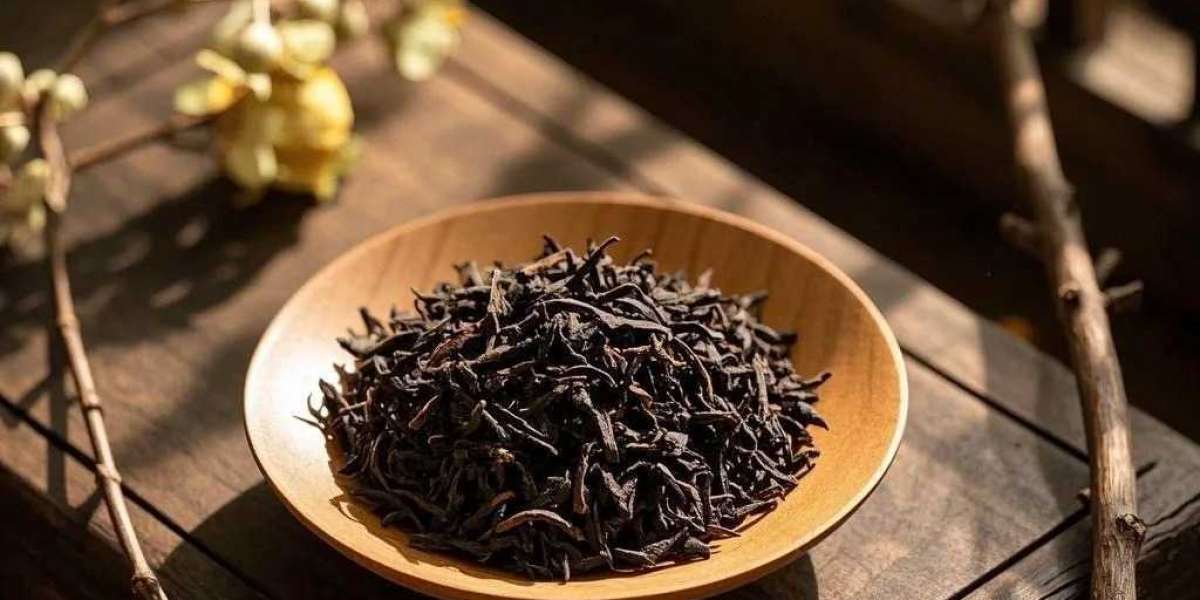Introduction to Oolong Tea
Oolong tea represents one of the most complex and varied categories in the world of tea. This partially oxidized tea, with oxidation levels ranging from 10% to 85%, occupies the fascinating middle ground between green and black teas. The name "oolong" translates to "black dragon" in Chinese, a poetic reference to the dark, twisted appearance of the leaves and the legendary stories surrounding its origin.
What makes oolong tea truly special is its incredible diversity of flavors and aromas. Depending on the variety and processing method, oolongs can offer:
Floral and fruity notes
Creamy, buttery textures
Roasted, toasty characteristics
Honey-like sweetness
Mineral and earthy undertones
This versatility, combined with numerous health benefits, has made oolong tea increasingly popular worldwide, particularly among tea connoisseurs who appreciate its complexity and depth.
The Rich History of Oolong Tea
The origins of oolong tea can be traced back to China's Fujian province during the Ming Dynasty (1368-1644). While the exact origins are debated, most historians agree that oolong processing techniques were refined in the Wuyi Mountains of northern Fujian and the Anxi region of southern Fujian.
Legendary Beginnings
Several colorful legends surround the discovery of oolong tea:
The Black Dragon Legend: A tea farmer named Wu Liang (later corrupted to "Wu Long" or oolong) was distracted by a black dragon while processing tea, resulting in partial oxidation.
The Qing Dynasty Tribute Tea: Wuyi Mountain teas were so prized that they became imperial tribute teas, with Da Hong Pao (Big Red Robe) being reserved exclusively for emperors.
Historical Development
Key milestones in oolong tea history:
16th Century: Early oolong processing methods developed in Fujian
18th Century: Oolong cultivation spread to Taiwan
19th Century: Oolong teas became important export commodities
Modern Era: Scientific research confirms health benefits of oolong
Oolong Tea Production Process
The art of making oolong tea involves precise control of oxidation and careful processing. Here's how it's done:
1. Plucking
Only the top 2-3 leaves and bud are hand-picked
Harvest timing affects flavor (spring harvests are most prized)
2. Withering
Leaves are spread out to wilt and lose moisture
Can be sun-withered or indoor-withered
3. Bruising
Leaves are gently shaken or tumbled to bruise the edges
This starts the oxidation process
4. Oxidation
The most critical step for determining oolong type
Light oolongs: 10-30% oxidation
Dark oolongs: 40-70% oxidation
5. Fixation (Kill-Green)
Heat application stops oxidation at desired level
Traditionally done in hot pans
6. Rolling
Shapes the leaves and brings out oils
Can be tightly rolled (Anxi style) or strip-style (Wuyi style)
7. Drying and Roasting
Final drying preserves the tea
Some oolongs receive additional roasting for depth
Major Types of Oolong Tea
Oolong teas can be categorized by their oxidation level and region of origin:
Chinese Oolongs
Fujian Oolongs
Tie Guan Yin (Iron Goddess of Mercy): Light (15-30% oxidation), floral aroma, Anxi county
Da Hong Pao (Big Red Robe): Medium-dark (40-60%), mineral flavor, Wuyi Mountains
Shui Jin Gui (Golden Water Turtle): Medium oxidation, fruity notes
Guangdong Oolongs
Phoenix Dancong: Single-bush teas with fruity aromas (peach, orchid, almond)
Taiwanese Oolongs
High Mountain Oolongs
Ali Shan: Buttery texture, floral aroma
Li Shan: Grown at highest elevation, complex flavor
Shan Lin Xi: Fresh, clean taste with sweet aftertaste
Specialty Taiwanese Oolongs
Dong Ding: Traditional roasted oolong
Oriental Beauty: Bug-bitten leaves create honey-like sweetness
Health Benefits of Oolong Tea
Modern research has confirmed many of oolong tea's traditional health benefits:
1. Weight Management
Contains polyphenols that may boost metabolism
Studies show increased fat oxidation
2. Heart Health
May help lower LDL cholesterol
Contains antioxidants that support cardiovascular health
3. Blood Sugar Regulation
Polysaccharides in oolong may help regulate blood sugar
Beneficial for diabetes prevention
4. Mental Alertness
Moderate caffeine content (30-50mg per cup)
Contains L-theanine for calm focus
5. Skin Health
Antioxidants combat free radicals
May help with eczema and other skin conditions
How to Brew Oolong Tea
Traditional Gongfu Method
Water Temperature: 85-95°C (185-203°F)
Tea Amount: 5-8g per 100ml water
Rinse: Quick 5-10 second rinse
Steeping Times:
First infusion: 15-30 seconds
Add 5-10 seconds for each subsequent infusion
Number of Infusions: High-quality oolong can yield 6-10 brews
Western Brewing Method
Water Temperature: 90°C (194°F)
Tea Amount: 2-3g per 200ml water
Steeping Time: 3-5 minutes
Re-steep: 2-3 times
Conclusion
Oolong tea offers an unparalleled journey through flavor, aroma, and tradition. From the floral notes of a lightly oxidized Tie Guan Yin to the roasted complexity of a Wuyi cliff tea, oolongs provide endless opportunities for exploration and enjoyment. Whether you're drawn to its health benefits, fascinated by its production process, or simply seeking a delicious cup of tea, oolong has something to offer every tea lover.




